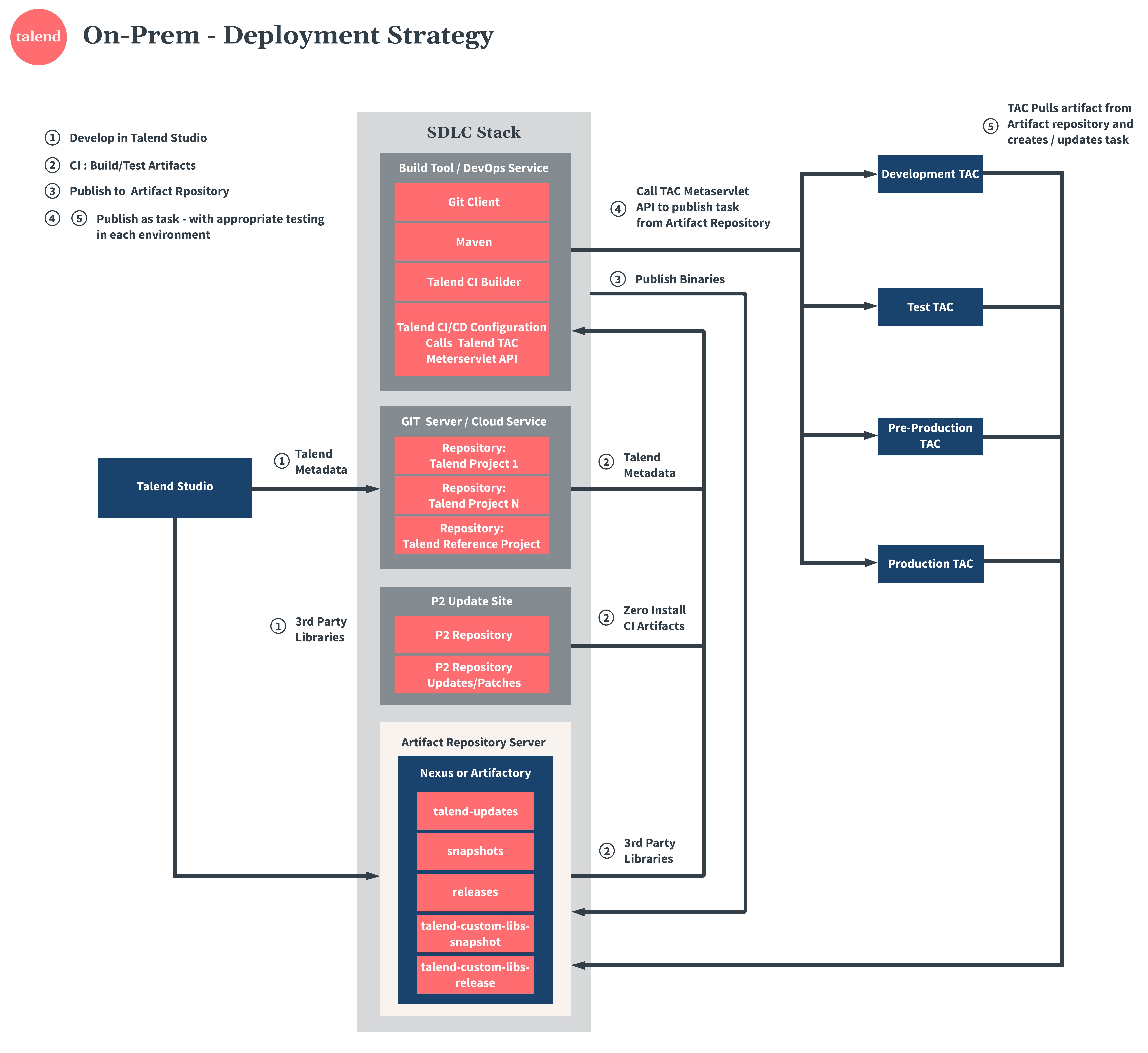Environments and deployment strategy
This section focuses on the Environment Strategy for an Enterprise deployment of Talend. Typically an Enterprise deployment of Talend will include:
- Multiple user personas, each with tools suited to their requirements, such as Data Preparation for a business user, or Talend Studio for a data engineer
- Artifacts developed in Talend Studio requiring a full Enterprise Software Development Life Cycle (SDLC), including Continuous Integration and Continous Delivery (CI/CD)
- Multiple teams working on multiple projects in parallel
- High Availability and Load Balancing
- Environment specific security / access
For Enterprise deployments, Talend recommends a four environment strategy, coupled with an automated approach to building / testing and deployment:
Environment Strategy
A typical Enterprise deployment of Talend should have four environments: development, test, pre-production and production.
Development: The environment where developers build and unit test their artifacts.
Test: Integration testing and ensuring that no dependencies to the development environment have been left in by accident - it should not include high availability so testing can focus on testing the logic rather than environment testing.
Pre-Production: An environment that should be as close a mirror of production as possible - used for high availability testing, production patch testing, performance testing and user acceptance testing.
Production: The production environment.

Talend recommends the use of Continuous Integration / Continuous deployment techniques instead of manual deployments. For more information please see the SDLC guide: https://help.talend.com/r/en-US/7.3/software-dev-lifecycle-best-practices-guide/what-is-software-development-life-cycle
Did this page help you?
If you find any issues with this page or its content – a typo, a missing step, or a technical error – let us know how we can improve!
